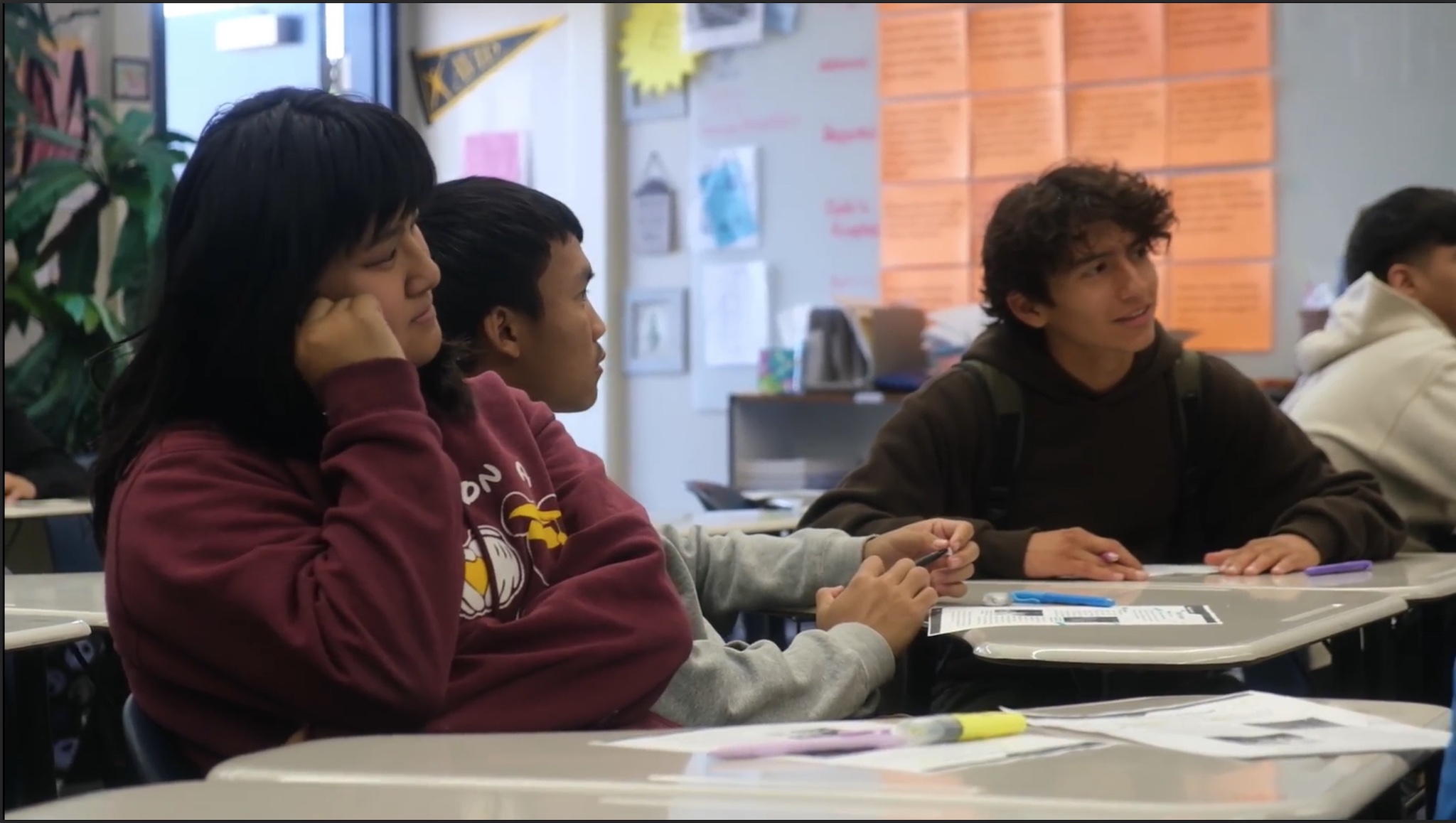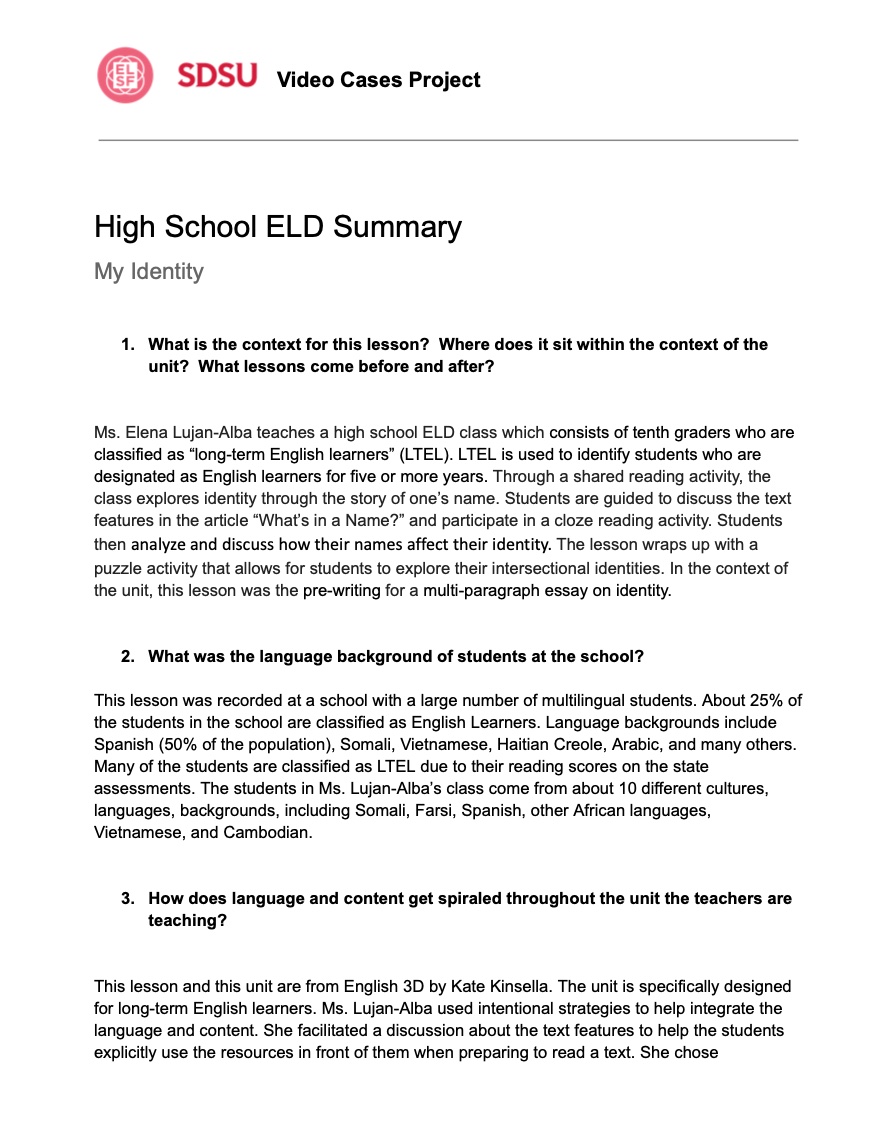English Language Development
What is the context for this lesson?
Ms. Elena Lujan-Alba teaches a high school ELD class which consists of tenth graders who are classified as “long-term English learners” (LTEL). LTEL is used to identify students who are designated as English learners for five or more years. Through a shared reading activity, the class explores identity through the story of one’s name. Students are guided to discuss the text features in the article “What’s in a Name?” and participate in a cloze reading activity. Students then analyze and discuss how their names affect their identity. The lesson wraps up with a puzzle activity that allows for students to explore their intersectional identities. In the context of the unit, this lesson was the pre-writing for a multi-paragraph essay on identity.
How are scaffolds embedded throughout the lesson and unit to support learning?
One important scaffold was peer collaboration: Students answered questions with a partner about how they got their name, making that connection with the article that they were reading. Students also shared their ideas with others to see each other as assets. Other scaffolds include the visuals, comprehensible text with highlighting and annotations during the Cloze reading, and word bank included on the exit slip.
What makes this lesson culturally and linguistically responsive?
The lesson capitalizes on what the students know well–their names and identities. This topic was the focus of the literacy lesson. The lesson was part of a series of lessons about students’ identity and the uniqueness and importance of their identities. Providing an opportunity to explore intersectional identities also made this lesson highly responsive to the students.
Lesson Materials


